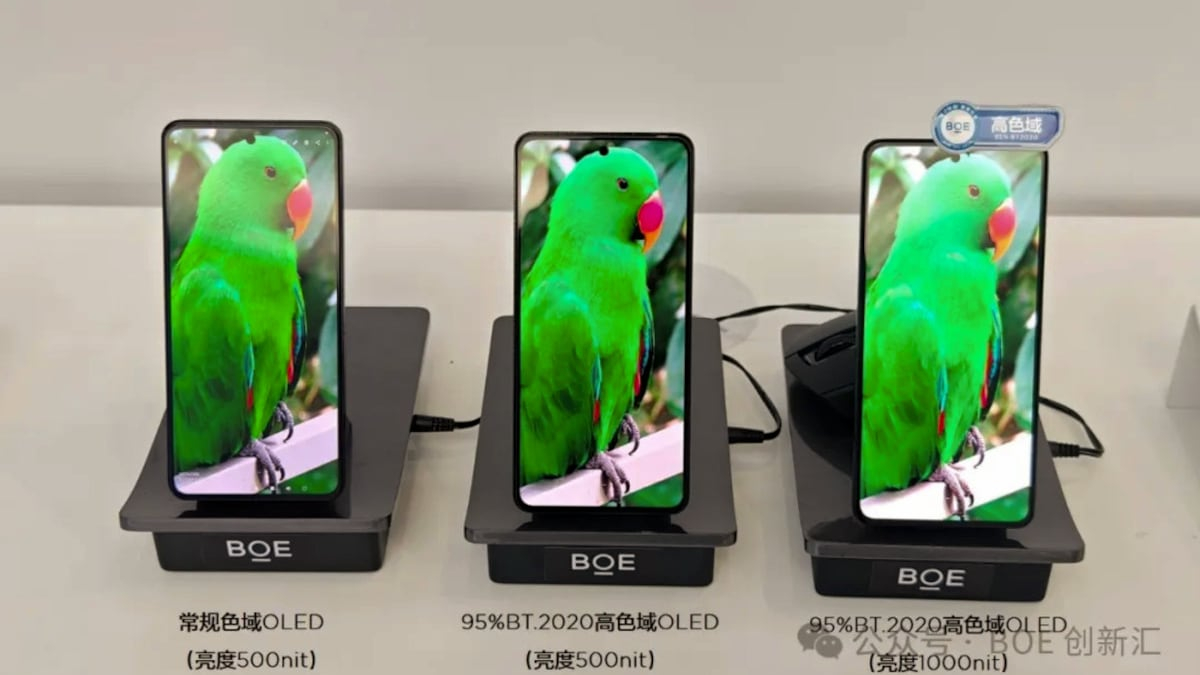This new OLED panel hits 95% color gamut, outshining some of the best LG and Samsung TVs by 10-25%
Is BOE the new leading OLED innovator?

BOE, a consumer electronics maker that is also one of the world's biggest display manufacturers from China, has released a new OLED prototype that can show 95% of the Rec.2020 (also known as BT.2020) color gamut, which is better than LG and Samsung OLED displays.
According to OLED-Info, the new prototype, which is currently intended for phones, tablets and laptops, was shown off at the company's Innovation Partner Conference on September 4. As you can see from the below post on X (formerly Twitter), the new OLED tech improves the accuracy and richness of the colors displayed significantly.
BOE shows its first TADF OLED prototype, with a green hyperfluorescence emitter system and a tandem architecture:https://t.co/6F9KLKlYN7#OLED pic.twitter.com/zlac760zDISeptember 5, 2024
To give some numbers (like FlatpanelsHD first pointed out), LG's W-OLED, found in TVs like the LG B4, shows about 70% of the Rec.2020 color gamut. Meanwhile, Samsung's AMOLED tech, found in some of its smartphones such as the Samsung Galaxy S24 Ultra, displays roughly 70-80% and its QD-OLED tech shows up to 90%, which we found to be the case when we tested one of its best TVs, the Samsung S95D – it achieved a result of 87.9%.
At the time of writing, BOE's OLED screens can be found in some of the best phones on the market, such as the Honor Magic V3, which uses BOE's f-OLED (flexible folding display screen) tech.
There is currently no word as to whether this new OLED prototype will come to TVs, but BOE is also a TV display manufacturer, covering sizes from 26- to 110-inches including 8K Super IPS-ADS technology, so hopefully it may look to expand this new tech into its larger display screens.
More colorful TVs?

The Rec.2020 color space, which we refer to as BT.2020 in our TV reviews, is said to show more color visible to the human eye than both the older Rec.709 and DCI-P3 color spaces, which we refer to as UHDA-P3 in our TV testing – the latter is used in the movie industry.
In general, most TVs display below 75% of the Rec.2020 color space. For instance, some of the best OLED TVs such as the LG C4 hit 72.7% in our tests. Even budget mini-LED TVs like the the Hisense U6N hit 73.1%, while 8K TVs such as the Samsung QN900D hit lower than 75%, with the QN900D tapping out at 70.5%.
Sign up for breaking news, reviews, opinion, top tech deals, and more.
The Samsung S95D, which uses QD-OLED technology, hits over 87% as we've stated above and this is just one contributing factor to why it earned five stars out of five in our review, with its bold, vibrant colors being one of its highlights. It proves that good color gamut coverage can add an extra layer to a TV.
Although BOE hasn't said whether its 95% Rec.2020 OLED displays are coming to TVs, we're hoping it will. OLED is already the arguably most popular TV panel tech available and the possibility of adding even more color into its already dynamic picture is only good news.
At the very least, BOE's colorful displays could encourage LG and Samsung to improve on its own OLED tech, although QD-OLED is close already. Hopefully, we may see the likes of more entry-level OLEDs like the LG B4 displaying even more vivid colors. There's nothing wrong with a bit of healthy competition.
You might also like

James is the TV Hardware Staff Writer at TechRadar. Before joining the team, he worked at a major UK based AV retailer selling TV and audio equipment, where he was either telling customers the difference between OLED and QLED or being wowed by watching a PS5 run on the LG 65G2. When not writing about the latest TV tech, James can be found gaming, reading, watching rugby or coming up with another idea for a novel.